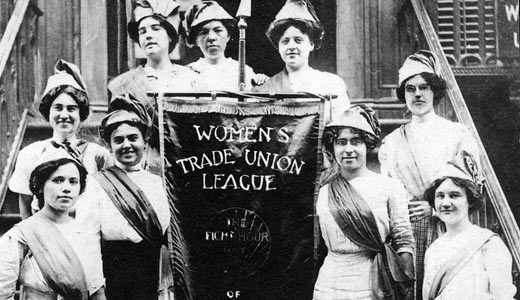
On Nov. 14, 1903, working-class and wealthier women gathered in Boston to found the Women’s Trade Union League to support the efforts of women to organize labor unions and to eliminate sweatshop conditions. The WTUL played an important role in supporting the massive strikes in the first two decades of the twentieth century that established the International Ladies’ Garment Workers’ Union and Amalgamated Clothing Workers of America and in campaigning for women’s suffrage among men and women workers. The Women’s Trade Union League, nearly forgotten in much of the mainstream, feminist and labor history written in the mid-20th century, was a key institution in reforming women’s working conditions in the early 20th century.
Also founded today in 1938 was the Congress of Industrial Organizations (CIO), which changed the U.S. labor movement forever with its approach to organizing mass production and industrial workers, a section of the working class the American Federation of Labor failed to address. However, eight AFL unions were at the CIO’s founding. The two federations merged in 1955.
Before the CIO’s official founding, rank and file workers, including Communists and other left-wingers, began organizing unions at their industrial workplace. One such place was the industrial laundries of New York City. In 1936, early CIO activists (at that time called the Committee for Industrial Organization) and rank and file laundry workers forged new ground by organizing a predominantly Black and female workforce. The WTUL supported the laundry workers efforts and their strike. (To read more, see Laundry strike: Everybody goes out.)
Photo: Members of the Women’s Trade Union League of New York pose with a banner calling for the 8-hour day. (Kheel Center, Cornell University/CC)










